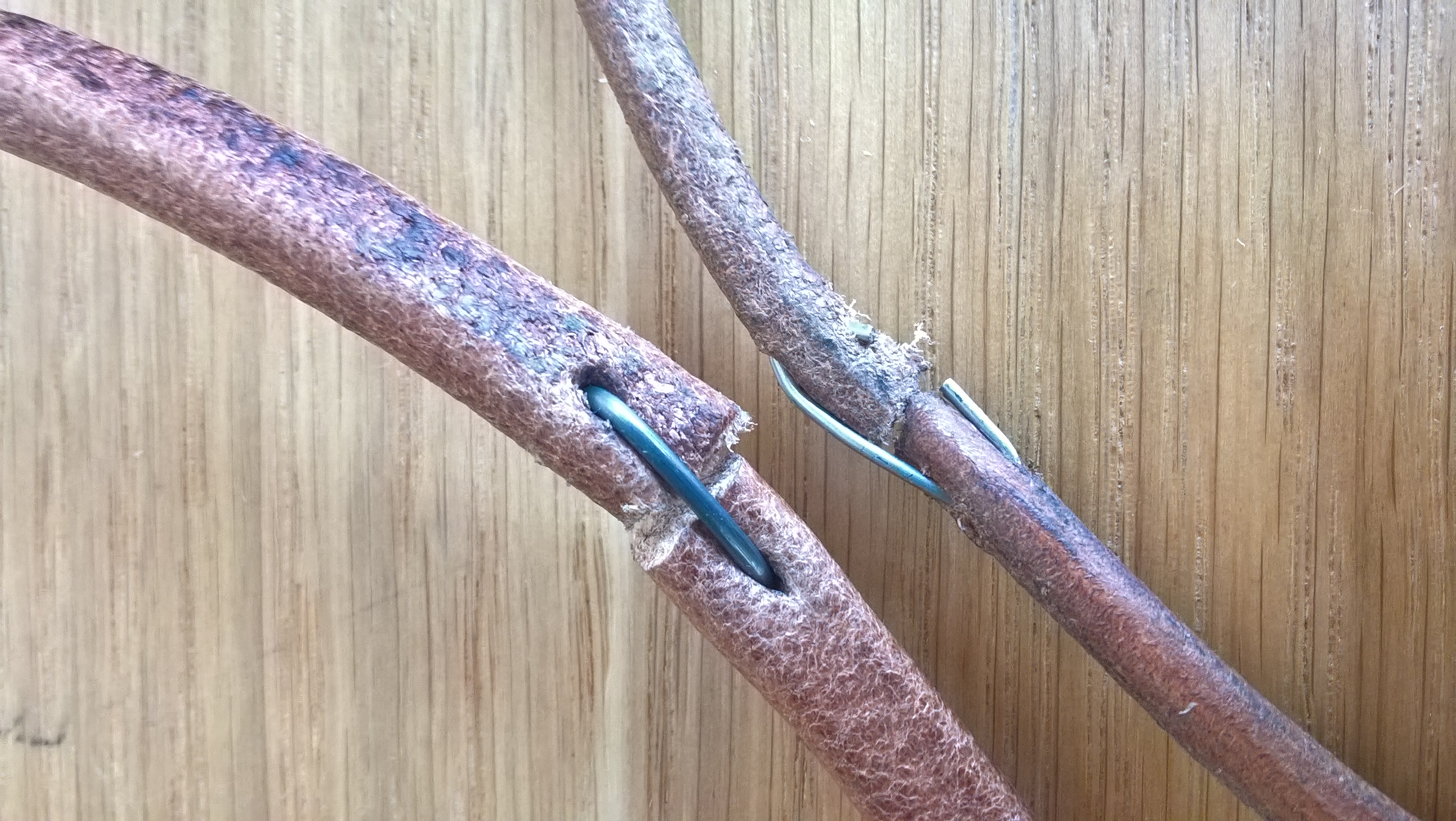I have a home made treadle table, described in another post. This is really the same as any treadle but with an enlarged work area. I’ve adapted it for my Singer 29k.
The only real issue with using a domestic treadle for the Singer 29k is that the gearing needs alteration. Domestic machines run at a reasonably low load, so the treadle gearing is set fairly high. The treadle wheel I have is 350mm diameter and with a typical 100mm diameter for the belt around the handwheel gives a gearing of 3.5:1 – i.e. one cycle of the treadle means 3 ½ stitches.

The original Singer 29k treadle base has a treadle wheel only around 250mm diameter and two options on the main shaft. For the short, narrow arm 29k’s, pulleys of either 124mm or 73mm are provided. Long arm and “big arm” models have lower gearing again. The small pulley is 83mm and the larger one is 140mm This gives gearing of around 2:1 or 3.4:1: for the short/narrow arm models – both lower than the domestic. Long / wide arm gearing is 1.8: 1 or 3:1. Just using the domestic wheel on the 29k with no other modifications would mean the treadle would run heavy and with poor control over the speed.
Adding in reduction pulleys with the domestic treadle wheel allows the gearing to be adjusted. I made a wooden base that sits in the cut-out for the domestic machine in the table. On that base is mounted a 10mm diameter shaft running in cushion bearings. “Z” section pulleys of 110mm and 130mm sit on the end of the shaft. The 130mm one is connected to the treadle wheel and the 110mm wheel to the 29k via leather treadle belts. The height of the shaft is set to be the same as a domestic machine above the table top. Original plan was to use the same domestic treadle belt for the main belt for the 29k. Unfortuately there is too much load for this to work well, so I had to find a heavier duty solution.

The 29k sits forward of the cut-out for the domestic machine. On my short, narrow arm 29k15 this gives gearing of 1.9:1 or 3.4:1. I found an 8mm leathr treadle belt at Trojan Sewing (UK), which connects the 29k to the reduction gear. This fits the Z section pulleys very well.

The arrangement works pretty well and is not much more work than a domestic, but runs at much lower speed. It’s acceptable as generally the patcher is used for short length repairs where control is more important than speed. The bobbin on the 29k just isn’t big enough to do very long runs anyway.
Using a leather drive belt has the beuty that it can be cut to any length. I have two belts – one from the treadle base to the gear redution and another from that to the machine.


When used with a treadle the flywheel on the 29k is best relocated to run on the end of the machine rather than the side. It’s a bit of a fag to swap over as it usually needs a puller to get the handwheel off, so is not something you want to de regularly. I prefer the 29k as a treadle rather than a hand crank for longer runs as it gives both hands free to control the work – useful when you’re “sewingly challenged” as I am. For very short runs in tight spots the hand crank is better as you can go one stitch at a time.

Another option for powering this machine would be to use an industrial motor – again with a reduction gear. If I were using such a machine professionally I think that would be the way to go. For my purposes though for occasional use I can’t justify that – the treadle arrangement is good enough for me.
I made a removable flat bed for the machine too, which helps make the machine more verasile. I just copied the design of the table originaly made for these machines as a factory option. I found the plans on the Needlebar website.


There are metal catches on the 18mm ply table that fit at the base of the free arm. They are made of two straight steel furniture straps, bent to shape. There’s a single door hinge that holds the fold down leg and an oak turn lever thing that holds the table firm on the machine.
There must have been two versions of this attachment. The one I’ve built is for hand crank work on a flat table. Models that fit on the original treadle table need a much longer fold down leg.
This table does make it easier to stitch flat materials. First job I did on this was to reinforce a tool roll that is just too tough for my other machines.